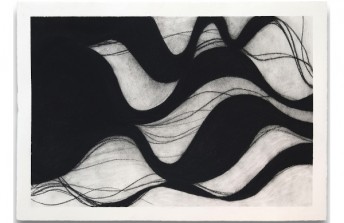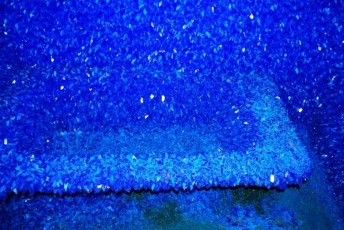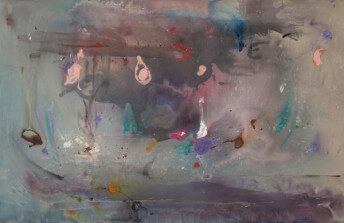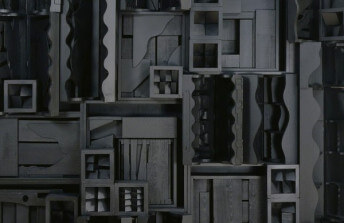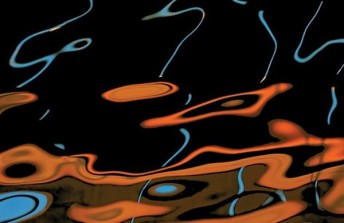The Lightness and Transparency of Gina Werfel
Oct 18, 2017
In a 2013 interview in the Huffington Post, Gina Werfel and her husband Hearne Pardee, both lifelong painters and longtime teachers at UC Davis, were asked where their practices intersected and where they diverged. The answer Werfel gave was enlightening. It boiled down to the idea that she is interested in things that are organic while Pardee is interested in things that are architectonic. But what was even more revealing than what she said was the way she said it. She explained that both she and Pardee “trained in the legacy of Hofmann’s teaching of “push-pull” planes in space,” but that Pardee was also influenced by “Sewell Sillman, a student of Albers.” While that might sound to some people like someone simply dropping names for the fun of it, what Werfel actually did there was declare that she is a believer in the concept of artistic tradition. By placing both her and her husband in the tradition of Hans Hofmann, she communicated that both are abstract painters who begin with observations of reality. But then by placing Pardee in the lineage of Josef Albers, an artist known for geographic, repetitive, process-based, highly-structured, hard-edge abstraction, she was saying that there are multiple divergent, complimentary paths an artist can take within the Hofmann-ian universe of abstract painting. The Albers tradition, to which her husband belongs, is one of concrete formalism. Meanwhile, the tradition to which she belongs is lyrical, open, instinctual, visceral—or as she put it, “bordering on all over chaos.” By defining herself as an artist who believes in tradition and lineage, Werfel took a stand. She denied the cynical contemporary fervor to disrupt and reinvent, and instead embraced that there is something timeless and valuable about the ancient lineages to which artists belong. That perspective is echoed in her latest body of work, which incorporates new (to her) mediums and methods, and extends the roots of her aesthetic tradition back more than 400 years.
Creating Space
New paintings by Gina Werfel were recently shown at The American University in Paris in an exhibition titled Recollections. Some of the words that come quickly to mind to describe the presence of these latest works are immensity, grandeur, and spaciousness. Compared to her previous bodies of work, these images expand in every possible direction. The illusionary space within the images seems to spread infinitely back, and seems also to project forward. The multitude of layers and markings trade influence, pulling us inward and around the picture, compelling us to look longer and stare more deeply, but not at any one shape, color or area. The best way to describe the phenomena is to say that somehow Werfel has found a way to create more space. She has unflattened her pictures; opened them up; blown them out. It is as if a big bang occurred and now her visual universe is stretching outward into panoramic, varicolored infinity.
The effect, she explains, has its roots not in Modernism, but in Baroque art. Werfel recently had the opportunity to serve as the Visiting Artist at the American Academy in Rome. It was her third fellowship or residency in Italy, but something unique occurred during this visit. She took new notice of what she calls the “spatial complexity of Baroque ceiling paintings.” A quick Google search of that phrase, Baroque ceiling paintings, reveals exactly what she means. The forms, colors, lines and shapes in these extraordinary works possess all of the luminosity and splendor of a Hubble telescope photograph of a supernova. Werfel realized that what makes these paintings such powerful hallucinations of heaven is not their subject matter, but rather their formal aesthetic qualities. The way colors, textures and shapes inhabit the surface and interact with each other—that is the key to creating space.
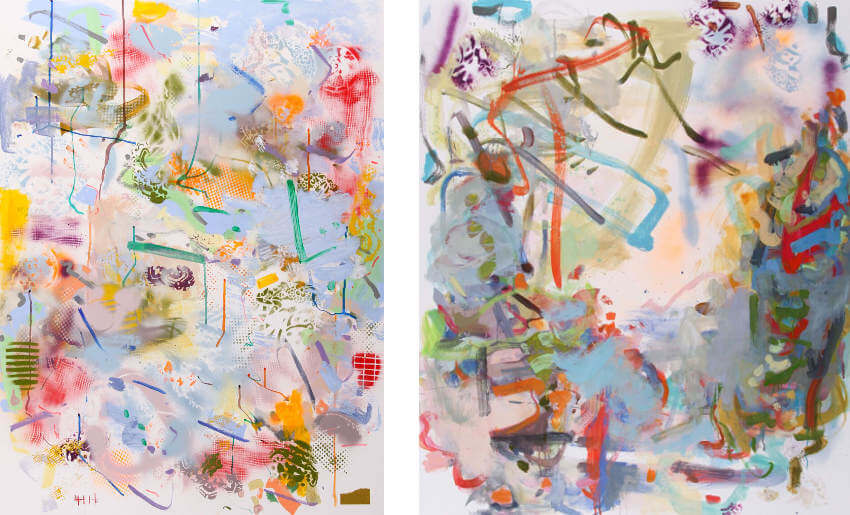 Gina Werfel - Galaxy, 2017 (Left) and Dragon Dance, 2017 (Right)
Gina Werfel - Galaxy, 2017 (Left) and Dragon Dance, 2017 (Right)
Creating Light
In addition to the spatial complexity that Werfel has infused into her new paintings, the work also possesses a newly heightened sense of lightness and translucency. Werfel created this quality by introducing two new mediums and methods to her process: collage and spray paint stencils. Collage allows her to cover up elements in a way that adds physical dimension, an act that alters the way light interacts with the surface of the work. The spray painted stencils create an uncanny ethereality: they convey recognizable patterns and shapes, but the ghostly surface qualities of spray paint allow the background imagery to pervade through the particles of color. These methods confuse the eye just enough to eliminate any sense that one part of the image is dominant. There is depth and perspective, or “push pull” as Hofmann would say, but it is impossible to know what is in front and what is in back.
This supercharged lightness and transparency that Werfel has introduced to her new paintings combines with her increased in space to gives the work a symphonic feeling of openness. The pictures boom and echo. They resound beyond their own borders. They are musical works, meaning not only that they convey some sense of drama or movement, but also that they possess a unique tone. They create their own atmosphere, one that has a certain clarity, aside from the fact that its meaning and potential remain open. This is the mature work of someone working in the tradition that stretches back to artists like Helen Frankenthaler, Joan Miró and Wassily Kandinsky. But as Werfel has now also taught us, it is a tradition that stretches back much farther, at least to the Baroque masters, and undoubtably even farther, to the most ancient origins of lyricism and artistic intuition.
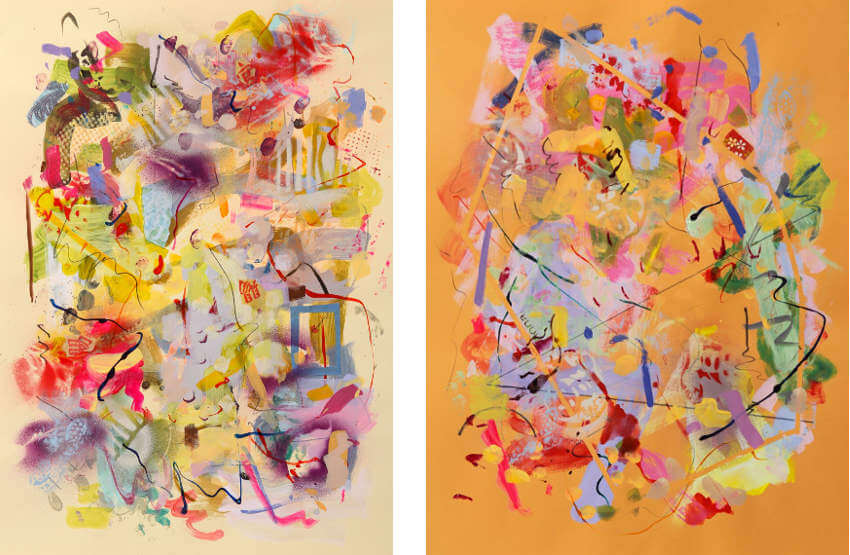 Gina Werfel - Island, 2017 (Left) and Orange Explosion, 2017 (Right)
Gina Werfel - Island, 2017 (Left) and Orange Explosion, 2017 (Right)
Featured image: Gina Werfel - Borders, 2017, acrylic on canvas, 40 x 34 in.
All images © Gina Werfel
By Phillip Barcio

